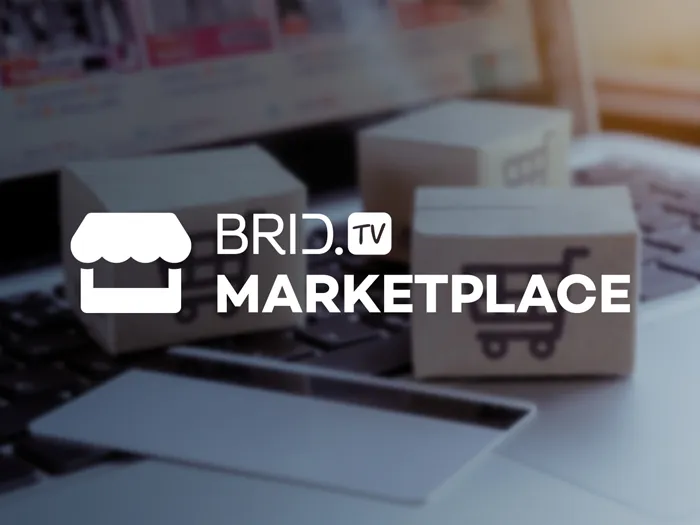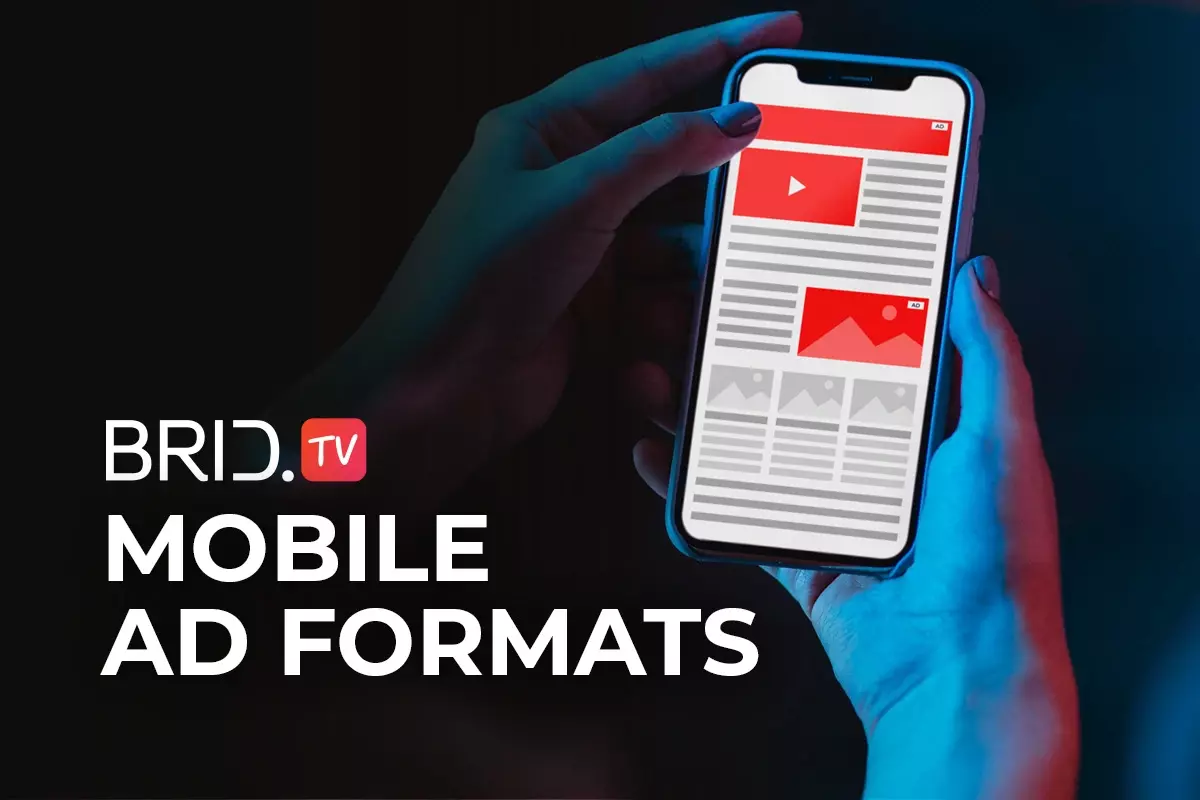According to Statista, there are around 4.9 billion mobile internet users worldwide, and this number is predicted to keep growing year by year. With so much traffic, it is no wonder that mobile ads have such great monetization potential. Are you planning to turn your app or mobile-friendly website into a source of revenue? Today, we’ll take a look at some of the most popular mobile ad formats and help you choose the right one for your business.
What Is In-App Advertising and Why You Need It
In-app advertising is any advertising that takes place within mobile applications, as opposed to the web. Some of the biggest perks of in-app ads are the amount of time and the number of users of mobile apps. According to eMarketer, apps make up 90% of mobile internet time. This makes mobile apps highly effective for advertisers and profitable for publishers and developers.
Best Mobile Ad Formats and When to Use Them
We have already established that ad inventory in mobile apps has high revenue potential. But that doesn’t mean you can just let any type of ad intrude on your users’ experience. Let’s take a look at some of the most common mobile ads and what they’re best used for.
Mobile Display Ads
Display ads are the most popular mobile ad format. They can be as simple, straightforward, and unintrusive as necessary. Still, they allow for a lot of creativity and customization. With the right placement, they have high CPM potential. Here are some of the most common types of display ads for mobile.
Standard Banner Ads
Standard banner ads usually show up at the very top or bottom of the screen (although this doesn’t have to be the case). They are quite unintrusive to the user experience and don’t take up too much space.
The main drawback of these ads is that they are susceptible to the so-called “banner blindness”, i.e., the tendency among users to simply ignore these ads. For this reason, advertisers must rely on eye-catching creatives to attract attention.
Key Characteristics:
- The most affordable mobile ad format
- Non-intrusive
- Always in high demand
- Compatible with any screen
Interstitial Display Ads
Unlike standard banners, interstitial ads are quite intrusive. They take up the entire screen, and the user usually needs to click out of them. Most commonly, they show up when the app is loading, before it closes, or between two levels of a game. Interstitial display ads have a higher level of engagement than regular banners.
Key Characteristics:
- High level of engagement
- Very intrusive but attention-grabbing
- High impression and conversion rates
- High demand among advertisers
- Offers more ad space for more detailed creatives
Rich Media Ads
Rich media ads have dynamic visuals, either in video or GIF format, and are sometimes accompanied by audio content. They are quite attention-grabbing and often interactive. For instance, they may prompt the user to shake their phone or “scratch” the ad to reveal a visual.
Rich media ads have high conversion potential due to their interactivity. However, advertisers using this format need to be careful not to overdo it and make the ad too intrusive and annoying.
Key Characteristics:
- A visually dynamic ad format
- Interactive and conversion-friendly
- Allows for a lot of creativity
- High conversion rates
- Higher CPMs than most other non-video ad formats
Native Display Ads
Mobile native ads rely on contextual targeting and fit organically into the context of the app or website where they appear. This means that they don’t necessarily look like ads and often contain useful information relevant to the user.
Native ads aren’t disruptive to the user experience and tend to be highly effective. The one major drawback of native ads is that they require more effort to design and adapt to the content where they will appear.
Key Characteristics:
- Blend in well with nearby content
- Less intrusive than other ad formats
- High click-through rates and engagement
- Demand for native display ads is on the rise
- Require more work than other formats
Carousel Ads
Carousel ads allow advertisers to provide more information than they would with a traditional banner ad. These ads contain multiple visuals that the user can swipe through and are often accompanied by different descriptions.
Carousel ads are an especially good choice for social media advertising. Some of the best use cases for this format include showcasing multiple products or the various characteristics of a single product, explaining a step-by-step process, and telling a story.
Key Characteristics:
- Contain multiple visual and textual elements
- Great for social media advertising
- High levels of interactivity and engagement
- Excellent for showcasing products or telling a story
- Require more work to design than regular banners
Mobile Video Ads
Mobile video advertising, as the name suggests, includes ads with video content. They are generally highly engaging for users, profitable for publishers, and effective for advertisers. Much like with display ads, there are many video ad formats out there.
Standard Mobile Video Ads
Typical video ads usually show up within a video in the form of instream advertisements. They can be skippable or unskippable, so the user might be forced to sit through an instream ad to watch the content.
The user may see the instream ad before, during, and/or after playing the video. In general, pre-roll ads are considered the most effective of the three, although mid-roll and post-roll ads have their perks, too. For instance, post-roll ads are the least intrusive type, but they yield the lowest completion rates.
Key Characteristics:
- Show up within a video stream
- Varying levels of intrusiveness
- Varying CTRs based on placement
- Require existing video content
- Higher CPMs than display ads
Interstitial Video Ads
Much like their display counterpart, interstitial video ads take up the whole screen. The only difference is that they contain a video instead of a static banner or GIF. Similarly, interstitial video ads tend to spark a lot of user engagement and have high CTRs.
Key Characteristics:
- Take up the whole screen
- Drive user engagement
- High click-through rates
- High CPMs
- Intrusive to users
Rewarded Video Ads
Rewarded video ads usually show up in games. As their name suggests, the user receives some kind of reward for viewing the ad. For instance, they may receive in-game currency, bonus lives, or a hint. Owing to this value exchange, rewarded video ads are one of the most popular in-app advertising formats.
Rewarded video ads have high completion rates, but they don’t bring as many conversions, since most users are only interested in getting their reward.
Key Characteristics:
- Users are rewarded for watching the ad
- Users must opt in to watch the ad
- Usually found in gaming apps
- High video completion rates
- Low CTR and conversion rates
Native Video Ads
Just like native display ads, native video ads blend in with the rest of the content of a given app or web page, and they don’t really look like ads. They are not disruptive to the user experience and engage the user organically with useful and relevant information. Native video ads are great for building brand awareness.
Key Characteristics:
- Blend in with nearby content
- Contain useful and relevant information
- Great for building brand awareness
- Excellent reach and user engagement
- Require more work than most other video ad formats
Gamification Ads
Gamification ads, gamified ads, or playable ads are advertisements that assume the form of a short, interactive game. Sometimes, they even allow the user to do a test run of the app they are advertising.
These ads are most commonly used to promote games, but they can also showcase other types of apps. For instance, the user may be able to simulate putting up an item for sale on a marketplace app. Gamified ads usually end with a simple CTA for the user to download the app.
Key Characteristics:
- Give users a test run of the app
- Highly interactive and engaging
- High conversion rates
- Require a lot of resources for production
- Great user retention rates
Most Popular Mobile Ad Sizes (And Which Formats Fit Them)
With the mobile advertising industry booming, it has become vital to introduce certain ad standards that all advertisers and publishers should adhere to for better results. This is where the Interactive Advertising Bureau (IAB) comes in. IAB has created standards and guidelines for advertisements of all kinds and for all types of screens, including mobile phones.
Here’s a quick overview of the most popular mobile ad sizes by ad type:
| Mobile Ad Format | Best Sizes |
|---|---|
| Banner Ads | 320×50 320×100 300×50 300×250 |
| Interstitial Ads | 320×480 480×320 300×400 300×250 |
| Carousel Ads | 1080×1080 |
| Video Ads | 320×180 320×480 480×320 |
How to Choose the Best Mobile Ad Format for Your App
If you’re looking to monetize your mobile app through ads, you will first have to decide what types of ads you want your users to see. However, every mobile ad format has its pros and cons, so picking the right one won’t be an easy task.
The best mobile ad format for your app will depend on a number of factors — most importantly, the type of app you are trying to monetize. For instance, if you have an OTT streaming service, serving video ads might be your best bet. On the other hand, if you’re planning to monetize a mobile game, rewarded ads will likely be the best option for your users.
Banner ads are quite versatile and can be used for all kinds of ads and apps, while native advertisements are great for news apps, blogs, and other information-rich apps. Highly-intrusive ads, such as interstitials, should never be used in apps where time is of the essence. For instance, emergency apps for disaster or health alerts should be as intrusion-free as possible.
Need Quality Mobile Ad Demand to Monetize Your App?
Regardless of the ad formats you pick, you will need high-quality ad demand to monetize your app. The best way to go about this is to join a reputable and reliable mobile ad network or app monetization platform.
Brid.TV provides publishers with high-quality display and video ad demand across all monetization channels. Users on our platform get access to advertisers from Google ADX, SpotX, and other reputable ad exchanges through a single ad vendor. Join Brid.TV today and turn your mobile app into a source of revenue.
· Premium Google ADX Demand
· Omnichannel Monetization
· Rich Selection of Video Ad Formats
· Real-Time Performance Tracking
· Automated Reporting


